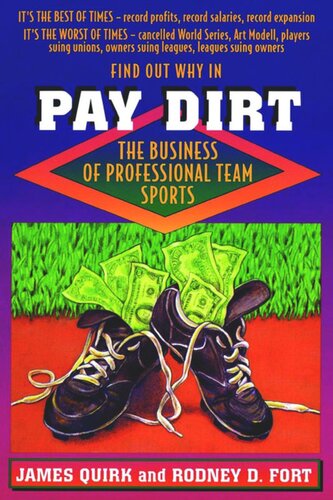

Most ebook files are in PDF format, so you can easily read them using various software such as Foxit Reader or directly on the Google Chrome browser.
Some ebook files are released by publishers in other formats such as .awz, .mobi, .epub, .fb2, etc. You may need to install specific software to read these formats on mobile/PC, such as Calibre.
Please read the tutorial at this link: https://ebookbell.com/faq
We offer FREE conversion to the popular formats you request; however, this may take some time. Therefore, right after payment, please email us, and we will try to provide the service as quickly as possible.
For some exceptional file formats or broken links (if any), please refrain from opening any disputes. Instead, email us first, and we will try to assist within a maximum of 6 hours.
EbookBell Team

4.8
64 reviewsWhy would a Japanese millionaire want to buy the Seattle Mariners baseball team, when he has admitted that he has never played in or even seen a baseball game? Cash is the answer: major league baseball, like professional football, basketball, and hockey, is now big business with the potential to bring millions of dollars in profits to owners. Not very long ago, however, buying a sports franchise was a hazardous investment risked only by die-hard fans wealthy enough to lose parts of fortunes made in other businesses. What forces have changed team ownership from sports-fan folly to big-business savvy? Why has The Wall Street Journal become popular reading in pro sports locker rooms? And why are sports pages now dominated by economic clashes between owners and players, cities with franchises and cities without them, leagues and players' unions, and team lawyers and players' lawyers? In answering these questions, James Quirk and Rodney Fort have written the most complete book on the business and economics of professional sports, past and present.
Pay Dirt offers a wealth of information and analysis on the reserve clause, salary determination, competitive balance in sports leagues, the market for franchises, tax sheltering, arenas and stadiums, and rival leagues. The authors present an abundance of historical material, much of it new, including team ownership histories and data on attendance, TV revenue, stadium and arena contracts, and revenues and costs. League histories, team statistics, stories about players and owners, and sports lore of all kinds embellish the work. Quirk and Fort are writing for anyone interested in sports in the 1990s: players, players' agents, general managers, sportswriters, and, most of all, sports fans.